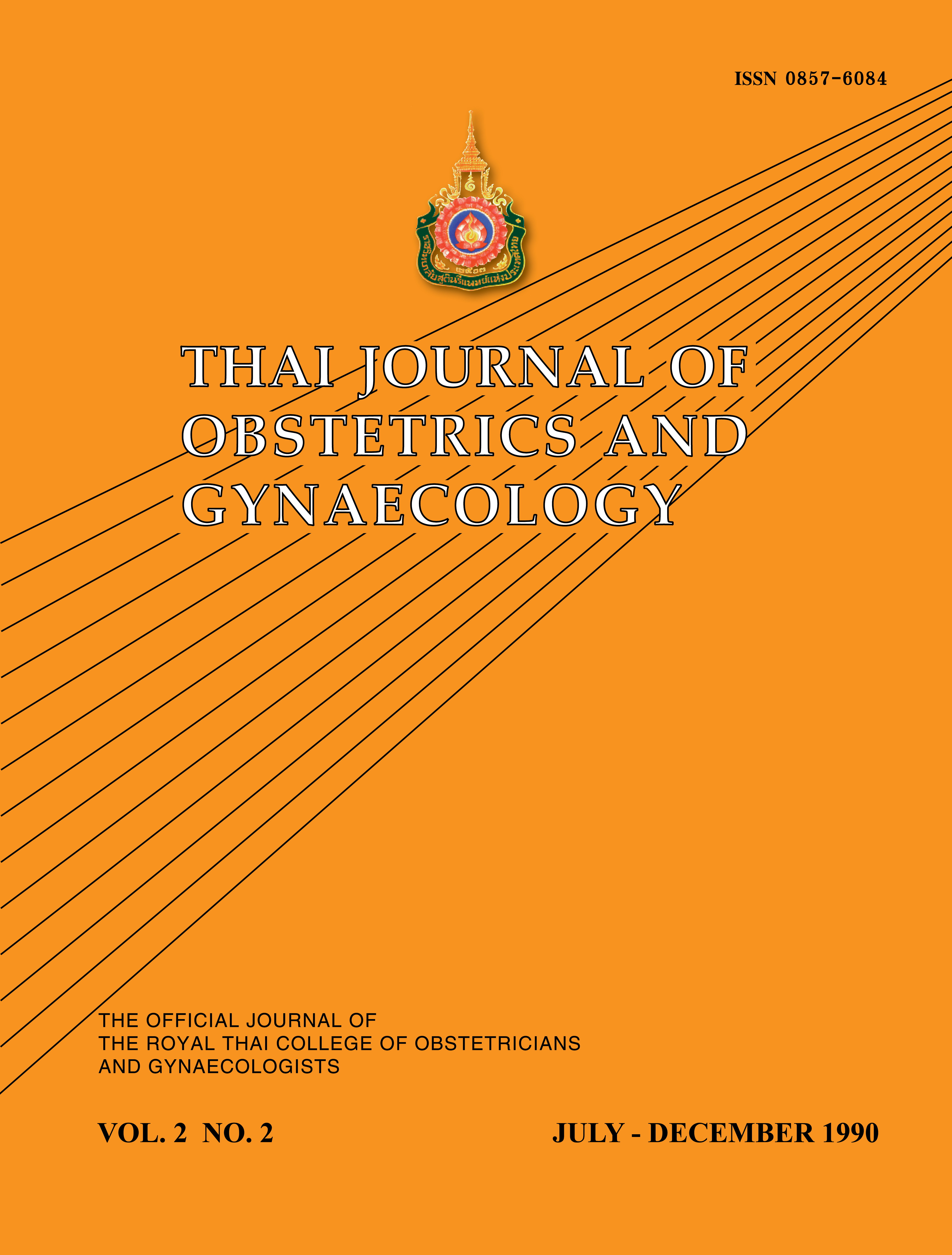Factors Associated with Term Infant's Birthweight of ≥ 3000 g at Ramathibodi Hospital
Main Article Content
Abstract
The aim of the National Economic and Social Development Plan (Phase VI) is to have at least 60% of infants born with a birthweight of ≥ 3000 g throughout the country. Biological, socio-economic and medical factors are all well known to be associated with infant's birthweight. This retrospective study, carried out during the first two years of the National Plan, was to find out the incidence and determine the association of maternal age, gravidity, weight at the time of labour, height, educational level, occupation, and complications during pregnancy with single liveborn infant weighing ≥ 3000 g at 37 weeks of gestation or more. The incidence of infant's birthweight of ≥ 3000 g was 68.1% and was significantly associated with all mentioned factors. Other than medical factors i.e. socio-eco nomic and biological factors were also strongly associated. Reduction of teenage pregnancy as well as improvement of nutritional status are highly recommended and of great priority in reaching the target set in the National Plan. (Thai J Obstet Gynaecol 1990;2:67-72.).
Article Details

This work is licensed under a Creative Commons Attribution-NonCommercial-NoDerivatives 4.0 International License.


